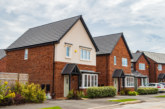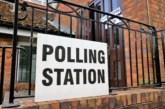New home sales have bounced following a conclusive general election result on 12 December 2019. In January 2020, 19,300 new homes were sold which is a 42% increase on a year earlier, according to a new report from Goodbody: Siteworks: A quarterly analysis of the UK new homes market.
The increase in new home sales is widespread across the country and is led by the East (+85% yoy) and the South East (+59%). There was a more modest increase in London’s new home sales (+8% yoy). It is too early to say whether the recent boost will be maintained given ongoing political uncertainty and wider risks including Coronavirus which is becoming more prevalent.
Builders have continued to respond to the soft London market by aggressively cutting new supply. The stock of new homes for sale fell further in recent months and is now down by one third since records began in 2018. The most recent quarter (Q4 2019) demonstrates a 4% year on year decrease, with the likely effect of stabilising prices in the coming months.
There has already been a turnaround in London’s housing market activity and prices following the general election, which Goodbody expects to feed through to gains in the net price balance in Q1 2020.
Across the UK, there has seen marked improvements in price growth at the high-end of the market, with asking prices increasing by 4% yoy as of February 2020, according to Rightmove. Asking prices have also grown in the rest of the market, but not to the same extent.
There continues to be oversupply in the property market. In the three years to 2019, there were 667,000 net additional dwellings delivered, which compares to 589,000 homes required, according to the methodology used by the Ministry of Housing, Communities and Local Government.
66% of local planning authorities (LPAs) in England produced greater than 95% of their local housing need over the past three years. As a result, new dwelling completions were 13% greater than housing needs in the three-year period.
Regionally, the North East produced 64% more homes than required, while London and the East of England produced too few homes over the period, as a result of the soft market.
Dermot O’Leary, Chief Economist, Goodbody comments: “The property market has experienced a strong start to the year with a bounce back in new home sales, improved price dynamics and a stabilising London market.
“However, it is too early to say whether these positive trends will be maintained given the ongoing risk of no-deal exit from the transition period at the end of 2019 as well as the broader, more elevated risks around the Coronavirus.
“Looking ahead, we are also keeping a watching brief on the Help-to-Buy scheme following the recent changes. While the caps put in place are likely to have a relatively low impact on FTB sales, the restriction of the scheme to FTBs alone will likely have significant implications for second time buyers, reducing their ability to move. New homes markets in the regions with the highest share of second time buyers, namely the East and West Midlands where the share was 24% and 23% respectively in H1 2019, are likely to be hardest hit.”









